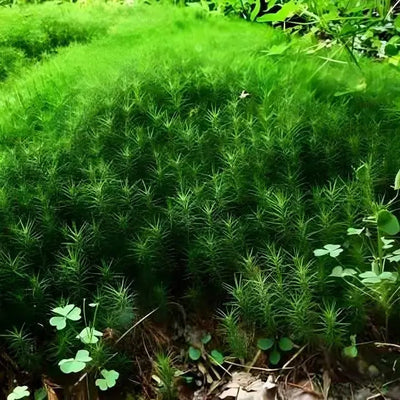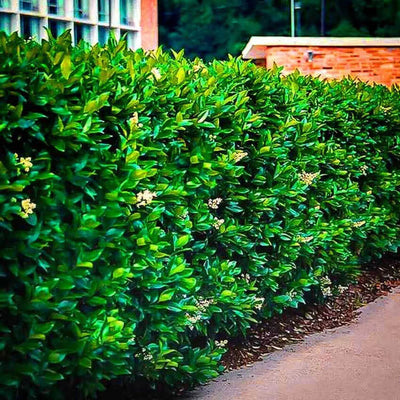The Benefits of Planting Privet Hedges
Landscaping is an art that combines aesthetics and functionality, transforming outdoor spaces into beautiful and purposeful areas. One versatile and popular landscaping element is the private hedge.
Privet hedges, composed of various species within the Ligustrum genus, have been a staple in landscaping for centuries due to their numerous benefits. These benefits range from enhancing privacy and security to providing habitat for wildlife and improving air quality.
This article will explore the multifaceted advantages of planting private hedges in various settings.
Privacy and Security:
One of the primary testimonies individuals opt for private hedges in their landscapes is the enhanced privacy and security they provide. A well-maintained private fence acts as a natural barrier, shielding your property from prying eyes and as a deterrent for intruders.
The dense foliage and rapid growth of private hedges contribute to their effectiveness in creating a private sanctuary within your property. Whether enjoying a quiet afternoon on your porch or hosting a family gathering in your backyard, private hedges offer a sense of seclusion that other landscaping features need to achieve more effectively.
Aesthetic Appeal:
Privet hedges are known for their elegant and versatile appearance. Whether aiming for a formal, structured look or a more relaxed and natural appearance, private borders can be adapted to complement your overall landscaping theme. Their dark green leaves provide a timeless backdrop for other garden elements, making them an excellent addition to various design styles.
Noise Reduction:
In urban and suburban environments, noise pollution can be a significant concern. The thick foliage absorbs and diffuses sound waves, creating a quieter and more peaceful outdoor space for you to enjoy.
Wildlife Habitat: Privet hedges offer not only benefits to humans but also to local wildlife. Birds, insects, and small mammals find shelter and nesting opportunities within private hedges' dense branches and leaves. This adds an ecological dimension to your landscape, promoting biodiversity and creating a small haven for critters that play essential roles in the ecosystem. By planting private hedges, you contribute to local wildlife conservation while enjoying the lively presence of nature in your surroundings.
Erosion Control:
Privet hedges can be effective erosion control agents for homeowners with soil erosion issues. Their well-developed root systems help stabilize soil on slopes and prevent water runoff. As the hedges grow, their intertwined roots bind the soil, reducing erosion risk during heavy rains and providing stability to vulnerable areas of your landscape.
Air Quality Improvement: Plants, including privet hedges, are vital in improving air quality. Additionally, the leaves of private walls can capture particulate matter and pollutants from the air, acting as natural air filters and enhancing the air quality.
Property Value Enhancement: A well-maintained landscape can significantly impact the value of your property. Privet hedges can enhance your property's attractiveness with aesthetic appeal, privacy benefits, and ecological contributions. Potential buyers often appreciate the presence of mature and healthy landscaping elements like private hedges.
Low Maintenance Requirements: While private hedges can increase, they are also known for their adaptability and low maintenance requirements. Once established, these hedges are relatively easy to maintain, making them a suitable choice for homeowners with varying levels of gardening experience. Regular pruning and shaping are necessary to keep the hedge looking neat and attractive, but they are manageable tasks.
Versatility in Growing Conditions:
Privet hedges are known for their ability to thrive in various growing conditions. They can stand multiple soil types and pH levels and are relatively resistant to pests and diseases. This adaptability makes them an excellent option for different climate zones and landscapes with varying soil compositions.
Tips for Planting Privet Hedges
Privet hedges can be a valuable addition to your landscape with their versatile benefits and aesthetic appeal. Following a few key tips is essential to ensure the successful settlement and growth of your private hedges. Here are some valuable guidelines to consider when planting private hedges:
- 1. Choose the Right Species: The Ligustrum genus comprises various species of privet, each with unique characteristics. Before planting, research the different species in your region and choose one that suits your climate, soil type, and desired hedge height. Common species include Ligustrum ovalifolium (California privet), Ligustrum japonicum (Japanese privet), and Ligustrum vulgare (common privet).
- 2. Select a Suitable Location: Privet hedges thrive in areas with full to partial sunlight. When choosing a location for your wall, ensure it receives at least 4 to 6 hours of daylight daily. Consider factors such as soil drainage, proximity to other plants, and available space for the hedge to grow to its mature size.
- 3. Prepare the Soil: Well-draining soil is essential for the healthy growth of privet hedges. Test the soil pH and make any necessary adjustments to ensure it falls within the preferred range for privet (usually around 6.0 to 7.5). Incorporate organic matter like compost to improve soil structure and nutrient content.
- 4. Plan for Spacing: Proper spacing is crucial to allow for adequate air circulation and prevent overcrowding as the hedges mature. Depending on the species and the desired hedge density, space privet plants about 2 to 4 feet apart. This spacing ensures the border grows together to form a continuous barrier while maintaining healthy individual plants.
- 5. Watering and Mulching: Proper watering is critical during the initial establishment phase. Water your newly planted privet hedges regularly, keeping the soil moist but not soggy. Applying a layer of organic hummus around the base of the wall helps retain moisture, suppress weeds, and regulate soil temperature.
- 6. Pruning and Shaping: Regular pruning is essential to maintain your private hedge's desired shape and size. Start pruning during the early stages of growth to encourage a dense and compact wall. Privet hedges can be pruned into various shapes, from formal geometric designs to more natural, flowing forms. Prune during the plant's dormant season to minimize stress.
- 7. Fertilization: An adjusted, slow-release fertilizer in the spring can provide the nutrients for healthy privet hedge growth. Continue the recommended application rates on the fertilizer packaging to avoid overfeeding the plants, which can lead to wasteful foliage growth at the expense of overall health.
- 8. Pest and Disease Management: While private hedges are relatively resilient, they can be sensitive to pests like aphids and diseases like powdery mildew. Regularly inspect your walls for signs of infestations or illnesses and take appropriate measures, such as using insecticidal soap or fungicides if necessary.
Following these tips, you can establish and keep private hedges that enhance your landscape's beauty, provide privacy and security, and contribute to a healthier outdoor environment.
In conclusion, the benefits of planting private hedges are numerous and diverse. From enhancing privacy and security to providing a habitat for wildlife and improving air quality, these hedges offer a well-rounded package for homeowners seeking functional and aesthetic enhancements to their landscapes. While they require regular maintenance, their privacy, beauty, and ecological rewards make them a valuable addition to any outdoor space. Whether designing a formal garden or a relaxed backyard retreat, private hedges can be tailored to meet your needs while offering your landscape a touch of timeless elegance.




